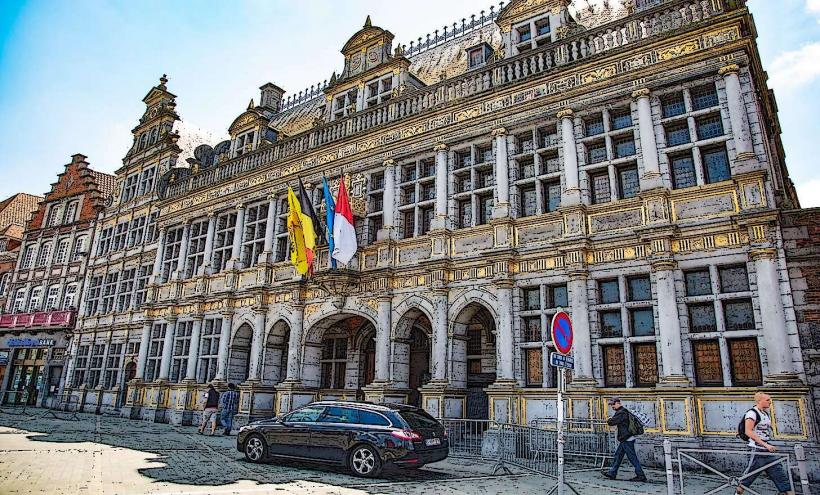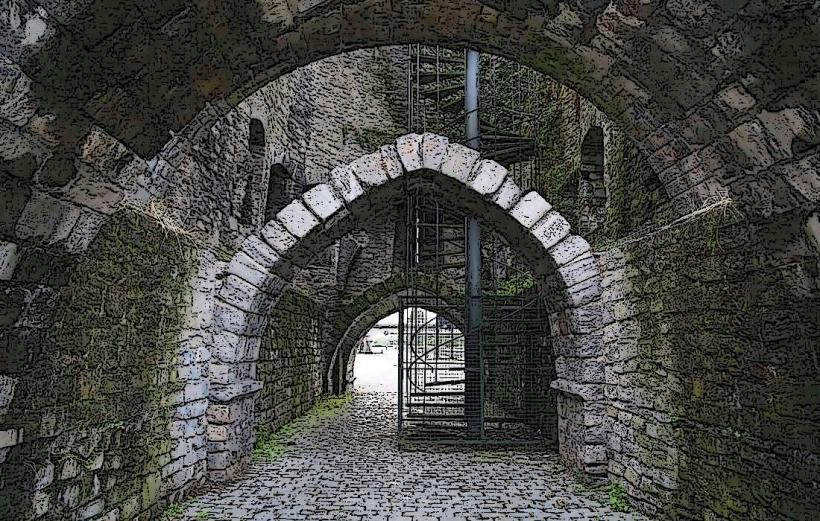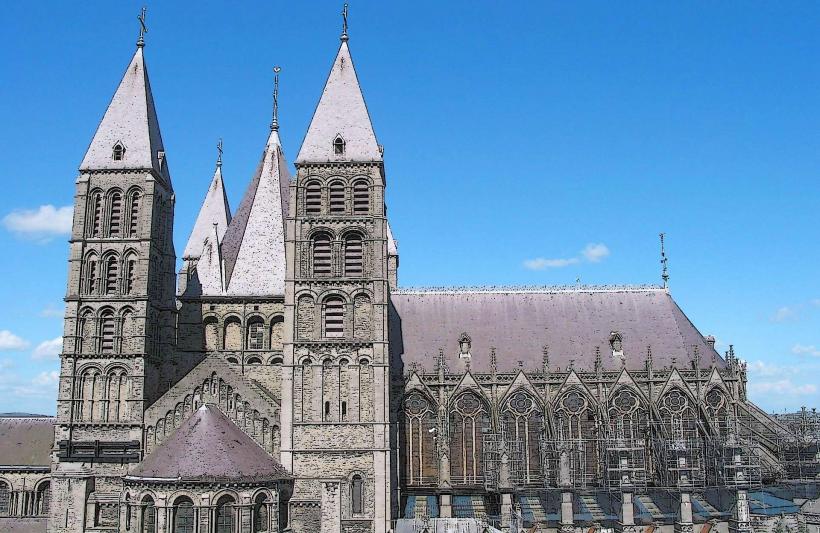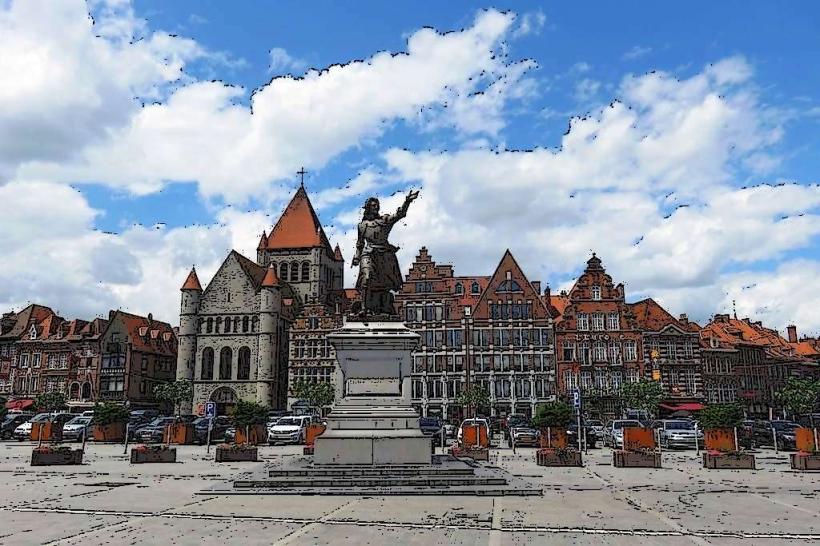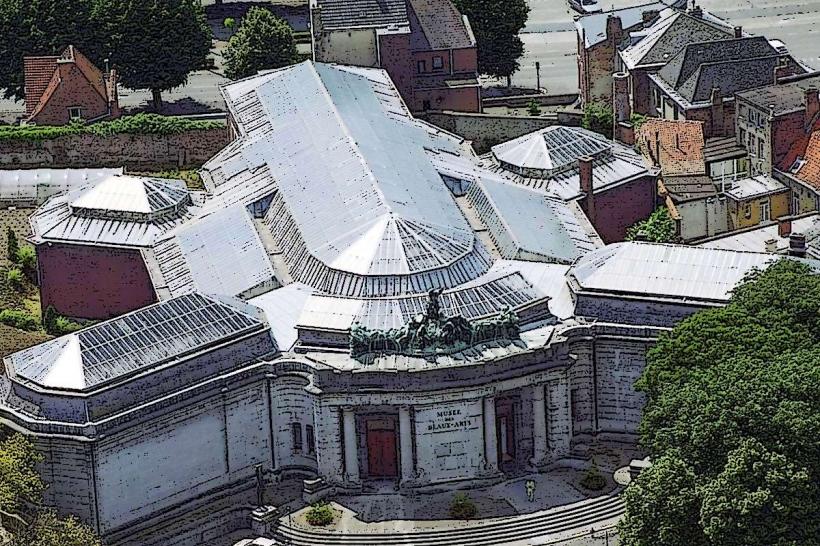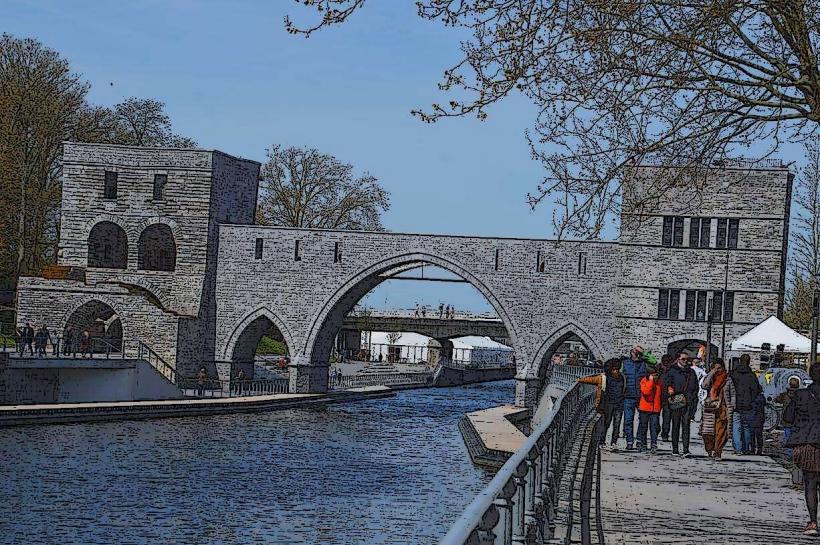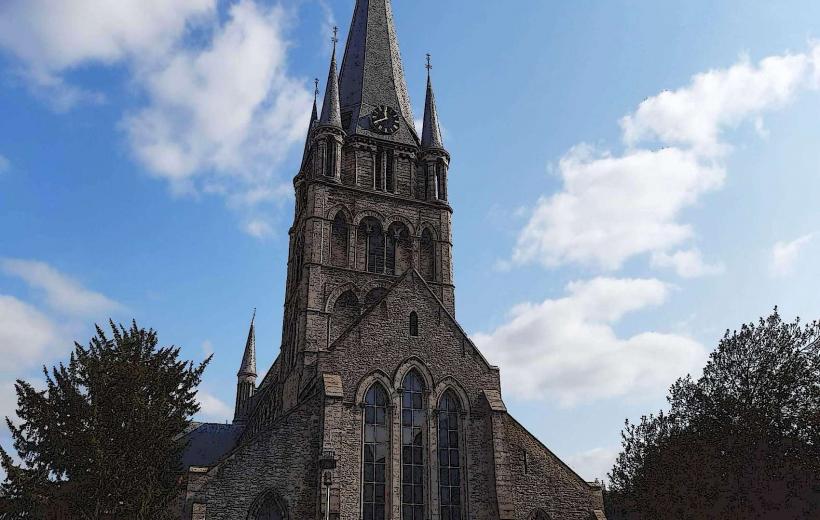Information
Landmark: Belfry of TournaiCity: Tournai
Country: Belgium
Continent: Europe
Belfry of Tournai (French: Belfroi de Tournai) is one of the most iconic and historic landmarks in Tournai, Belgium. It stands as a symbol of the city’s rich medieval heritage and is recognized as a UNESCO World Heritage site. The Belfry is an exceptional example of medieval civic architecture and played a central role in the urban and political life of Tournai during the Middle Ages.
Historical Background
Construction and Origins: The Belfry of Tournai was constructed in the 12th century, around 1188, during the period when Tournai was a significant urban center within the medieval County of Flanders. It was part of the larger trend of building belfries in towns across the Low Countries, which served as symbols of freedom and self-government. These towers were often used to store municipal charters, hold bells for marking time and announcing important events, and serve as a watchtower for the town.
Role in the City: The belfry was not just a civic structure but also a political symbol of Tournai’s autonomy. In medieval times, the belfries represented the independence of cities from feudal lords, and the Belfry of Tournai was no exception. The building was central to the governance and the administration of the city, hosting municipal functions and serving as a center of authority.
UNESCO World Heritage: The Belfry of Tournai was designated a UNESCO World Heritage site in 2000, as part of the group of Belfries of Belgium and France. This recognition highlights the importance of the Belfry as an architectural and cultural treasure, not only for Tournai but also for the region of the Low Countries.
Architectural Features
Romanesque and Gothic Styles: The Belfry is a unique blend of Romanesque and Gothic architecture, with its design evolving over time. The tower was initially built in the Romanesque style, which is reflected in the thick stone walls and round arches found in the lower parts of the structure. In the 14th century, the Belfry was renovated and extended in the Gothic style, which added slender, pointed arches and elegant design elements.
Tower Design: The Belfry’s tower is a free-standing structure that rises to a height of 72 meters (236 feet). The lower portion of the tower is square in shape, with robust stone walls, while the upper portion becomes more slender and features an octagonal shape. The top of the tower is crowned with a spire, which gives the Belfry its distinctive profile and makes it one of the tallest structures in the city.
The Bells: The Belfry is home to a carillon of bells, which were used to signal important events such as the time of day, the start of market days, and the arrival of official announcements. The bells also served as a way to warn citizens of danger, such as fires or enemy attacks. Over the centuries, the bells in the Belfry have been recast and replaced, but the tradition of using bells to mark the passage of time continues in Tournai.
Clock: The Belfry also features an impressive clock mechanism that has been an essential part of the tower’s function as a timekeeping device. The clock is still in use today, providing accurate time for the citizens of Tournai.
Stone Carvings and Reliefs: The Belfry is adorned with stone carvings, including sculptures of saints and figures that represent the city’s history and culture. These carvings can be found on the facade and at various points throughout the tower. The most notable sculptures are those of saints and biblical figures, which reflect the religious influences on the building’s design.
Cultural and Civic Role
Symbol of Independence: The Belfry was originally a symbol of Tournai’s municipal freedom, representing the city’s right to self-governance. The Belfry was the central place for announcing civic decisions, and it was here that important public events and political news were communicated to the people. The bells of the Belfry played a key role in this, as they were used to signal everything from market openings to the arrival of foreign dignitaries.
Towers and Belfries: Tournai’s Belfry is one of the oldest in Belgium and was part of a tradition of municipal towers found throughout Flanders and northern France. These towers were typically associated with cities that were granted charters of independence, and the Belfries were central to the local identity and pride of the cities.
A Civic Landmark: Over time, the Belfry of Tournai became more than just a functional civic building. It grew into a symbol of the city’s identity, a beacon visible from many parts of the town. It was used to mark key events in Tournai’s history, such as coronations, victories in battle, and the passage of important historical milestones. The Belfry continues to be a major landmark in the city, often depicted in paintings, photographs, and souvenirs.
Tourism and Visitor Experience
Climbing the Belfry: One of the most popular activities for visitors to Tournai is climbing the Belfry. Visitors can ascend the tower, either by stairs or via the elevator, to enjoy panoramic views of Tournai and the surrounding area. From the top of the Belfry, visitors can see the historic town center, the Notre-Dame Cathedral, and the surrounding countryside. The view is particularly breathtaking on clear days, offering an expansive vista of the region.
Exhibits and Information: Inside the Belfry, there are exhibits that explain the tower’s history and function. Visitors can learn about the construction of the Belfry, its role in Tournai’s history, and the importance of belfries in medieval civic life. The tower also houses displays about the bells and the carillon, with explanations of how they were used and their significance in the city’s daily life.
Cultural Events: The Belfry is also a venue for various cultural events, including concerts and exhibitions. The carillon is often played during special events and holidays, filling the town square with its melodic chimes. The Belfry’s location in the Grand Place makes it an integral part of Tournai’s cultural life.
Conclusion
The Belfry of Tournai is a remarkable and historic monument that holds immense cultural and architectural value. As one of the oldest and most significant belfries in Belgium, it stands as a testament to the medieval city’s freedom, self-governance, and pride. Its blend of Romanesque and Gothic architectural styles, along with its role as a civic symbol and landmark, makes it a must-visit destination in Tournai. Whether you are a history enthusiast, an architecture lover, or someone simply looking to take in the stunning views of the city, the Belfry of Tournai offers a rich and rewarding experience.

